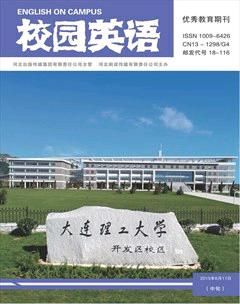厚讀薄學皆有益,交流鼓勵見真功
張慧敏
英語課堂應當是平等、開放的課堂。平等,指以學生為中心。教師應是學生學習的引導者、合作者和促進者。開放,指學生的思維完全打開,并可以暢所欲言。一名優秀教師,要在特定的情境中與學生展開真心交流,在交流中引發思維碰撞。
“厚讀薄學”是針對對教材的把握、對教學的設計來說的。見字明意,厚讀指把教材學豐富,最大化地挖掘文本內涵。薄學則指高屋建瓴地理解文本脈絡。“交流鼓勵見真功”,指教師需要運用深厚的語言功底和高超的教學機智走入學生當中,給予學生學習的興趣與動力。
一、以《江蘇省小學英語三上Unit3 Is this your pencil》教學設計為例
1.Warming up:
(1)Tell the Ss they will get some pencils.
(2)Lead in the topic
Ss talk about their pencils.
設計意圖:1)鉛筆是整堂課的線索,任務引領,主題明確。2)讓學生說自己的鉛筆,可以激發他們的表現欲,因為他們都很想展示自己的漂亮鉛筆。
2.New lesson
Section One:Say something as a loser and a finder.
T:If you lost your pencils,how will you feel?
Ss say and T conclude:Worry,sad,angry……
T:What can you say at that time?
(Ss say some drills.)
T:If you want to help the losers,what can you say?
(Ss say some drills.)
Section two:Lead in the story
A.整體把握課文
T:Today,a boy really lost his pencil.What do you want to know about it?
1)Ss say what they want to know.(Eg.Who,Where,…)
2)T conclude the questions and show three main questions:
Who lost the pencil?
Who helped the friend look for the pencil?
Did he find the pencil?
3)Ss watch the cartoon and answer the questions.
4)T(Show two pictures):Which one is Mikes pencil?
Ss choose one:the green one.
設計意圖:對于這個故事,讓學生先提出自己想知道的問題,可以刺激他們的求知欲。問題由學生中來,接著通過學習,仍回到學生中去解決,學生才真正做了主人。
B.細讀課文,部分操練
1)Read the story and find:What does Mike say when he look for his pencil? 學生回答。
2)Read the story again and find:What does Liu Tao and Yang Ling say when they help Mike?
學生回答。教師帶讀,師生互動chant操練。(This is——Is this)
3)T:Maybe something will happen after this.
同桌一起編對話,延續故事。
Eg.A:Can I have a look? B:OK.
T:Its my turn .教師也參與續編:After finding his pencil,Mike shows it to his friends.
Mike:Look at my pencil.Its green.Its nice.I like it.
3.Expanding
(1)T:Do you have any silent friends? Please show them.
學生展示自己的“不說話的朋友”。
Eg.Look at my rabbit.Its white.It can jump.Its my friend.
(2)其他同學聽后,再將物品送回主人處。
Eg.A:Is this your rabbit?
B:No,it isnt.
A:Is this your rabbit?
B:Yes,it is.
A:Here you are.
B:Thank you.
二、“厚”讀“薄”學皆有益
1.將教材讀“厚”。(1)注重對話題的理解和分析。新課程理念倡導要變“教教材”為“用教材教”,即教師要善于結合實際教學需要,靈活地和有創造性地使用教材。(2)設置開放性任務,挖掘學生潛力。本課話題與學生的生活息息相關。然而語言的習得決不能僅僅停留在機械地模仿上,要在“語用”層面多下功夫。
2.把教材學“薄”。(1)注重對語篇的整體理解和分析。本課設計中,語篇內容的呈現順序體現了從整體到局部再整體的教學理念,這更加符合語言習得的規律,有助于學習者整體接觸、感受、理解語言,而不是接受一些支離破碎的語言現象。(2)層次清晰,目標明確。教授一篇新語篇,最初不能拘泥于細枝末節,也不可操之過急,本課便采取了觀看動畫、自讀、齊讀的方式層層推進。
三、交流鼓勵見真功
1.充滿新意的激勵措施——“基于教學內容的獎品設置”用鉛筆圖片作為實時獎勵,對學生的課堂學習成果給予了肯定,同時也對鉛筆這一重要線索加以強化。
2.多樣化評價——心與心的交流。提出開放式問題,讓學生先根據自己的生活經驗和情感傾向說一說,對加強他們的積累大有裨益。

